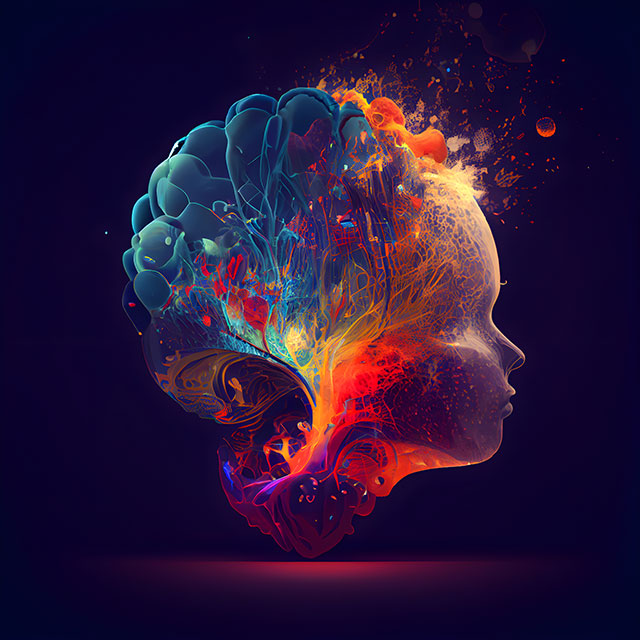FORWARD
Can generative AI stimulate human creativity?
Questions and concerns about AI and human creativity are no more rampant than with the ongoing Hollywood Writer’s strike.
A significant sticking point for the Writers’ Guild involves assurance that AI won’t replace them in the years to come.
That’s only one example of generative AI making inroads, creating waves, and–for many–causing concern.
For instance, AI-generated art brings with it many eyebrow-raising implications.
Furthermore, actors–like writers–are on strike. They’re also worried about being replaced by AI.
These are all adversarial scenarios involving human creativity and generative AI. In fairness, what’s new is often scary. Plus, there’s no guarantee that influential people with access to these tools will necessarily wish to use them for the greater good. They very well could be more interested in their bottom line.
This preamble begs the following questions:
Is the relationship between human creativity and generative AI actually adversarial?
Complex algorithms are used by generative AI models. They’re trained on data and learn the patterns inside them. They then apply this knowledge to new content generation, closely resembling the original data.
Or, in peeling back the layers, is there a more harmonious, fruitful relationship that can (and should exist) between human creatives and generative AI? Additionally, can humans be inspired to reach new heights in self-expression using generative AI?
We’ll investigate these questions below:
Generative AI: the specifics
First and foremost, we must define generative AI to best grasp its impact on human creativity.
Generative AI is artificial intelligence that can create original content (e.g., images, text, videos, and music). Conversely, other kinds of AI revolve more around existing pattern recognition and classification.
Complex algorithms are used by generative AI models. They’re trained on data and learn the patterns inside them. They then apply this knowledge to new content generation, closely resembling the original data.
Common use cases for Generative AI
Human creativity is more than simply art! We see it in all walks of life. You can apply it to anything, really. Creativity is necessary for problem-solving. Some people have to be creative in staying organised or spending money. You can even be creative about how you commute to work. Human creativity lends itself to almost all facets of your everyday routine.
Thus, generative AI is used to bolster human creativity in more than the arts. Of course, arts, media, and entertainment all stand to be impacted significantly–but they’re not alone.
Here’s a breakdown of where we’ve seen generative AI make waves with human creativity:
Entertainment and media
Characters for video games, movies, and other digital media forms can be generated with AI. The related tech can also be used to create true-to-life virtual environments.
Marketing and advertising
Generative AI can make personalised marketing campaigns and advertisements catered to target markets and audiences.
Arts and design
It’s possible to generate music, art, and designs with AI that closely resemble human creations. The art world will likely be revolutionised by this tech. Artists will eventually be able to design new art types beyond what was previously conceivable.
Education
Educators using generative AI can create more customised student learning plans for a more impactful and efficient teaching experience.
Healthcare
Synthetic medical images (e.g., CT and MRI scans) can be created with generative AI. This is a boon for medical diagnoses because AI models can be trained based on the aforementioned imaging.
Moreover, medical professionals can use generative AI to produce personalised patient treatment plans.
The lack of inhibitions of an AI coincides with how such tools don’t have a human’s nuance and emotional intelligence.
Augmentation versus replacing
Game-changing technologies like generative AI will undoubtedly change the way industries’ function. However, its capabilities aren’t meant to replace human creativity. Nothing can replace something so intangible.
What generative AI is set to do is help humans be more creative than ever. In fact, it could redefine our creativity parameters, expand our horizons, and take us to new, intrepid places we otherwise couldn’t have dreamed of.
A musician, for instance, can access a new composition in a new style or genre they are unfamiliar with. The AI isn’t going to do all the work for the musician. It will provide an original template from which the artist can create something beautiful of their own.
Generative AI could redefine our creativity parameters, expand our horizons, and take us to new, intrepid places we otherwise couldn’t have dreamed of.
The same premise applies to scriptwriters. Generative AI script-writing tools can give the writer the bones of a script. They help with the more mundane components of dialogue, plot creation, and possibly subtitles .
In these instances, human creativity remains of the essence. Generative AI clears out the clutter and makes space for creative juices to flow.
Even functionally, generative AI gives you more time to focus on pure, creative work because it automates mundane tasks. When you allocate more of your brainpower to something, you can access more dimensions and textures.
A boon to idea generation
Generative AI doesn’t just manage mundane tasks on your behalf.
Instead, it can generate outside-the-box ideas to lend us otherwise inconceivable perspectives since it doesn’t have the same inhibitions (e.g., shame and boredom) that hamper our creative processes.
Still, for reasons beyond creative integrity, you wouldn’t necessarily want to present an AI-generated idea as your own. After all, the lack of inhibitions of an AI coincides with how such tools don’t have a human’s nuance and emotional intelligence. Plus, our grasp of context will always be superior. It will instead give you a different way to look at things as you craft your own magnificent idea.
Rather than replacing human creativity, generative AI will remove the barriers that impede our best ideas and inspire new forms of self-expression.
The human mind is a powerful tool

Creativity is a meaningful, profoundly personal expression of what makes us who we are.
Human creativity is a beautiful thing. Our imaginations, emotions, and subjective experiences are all closely related. A person’s individual, social, and cultural background moulds our worldview and ignites our inspiration and passion.
Every person possesses unique insights and perspectives that can impact the creative process. Thus, creativity is a meaningful, profoundly personal expression of what makes us who we are.
Almost all the highest forms of music, literature, and art were crafted by a creator’s organic feelings and authentic experiences. Generative AI will always fall short of trying to emulate these core elements.
Indeed, generative AI lacks the subtlety of the creative human touch. However, it’s proficient in areas that we aren’t.
For instance, generative AI can potentially increase human productivity by $4 trillion annually.
Combining that level of productivity with our penchant for emotions and subtext will yield awe-inspiring results, and we eagerly await to see what they are.

Dr Evy Sakellariou SFHEA, FIKE, FCIM, CMBE is Associate Professor (Reader) of Creativity and Innovation at Kingston Business School, Kingston University London. Her previous work experience involves the leadership of innovation marketing functions in Unilever UK and overseas.
Her research focuses on creativity, and its relations with foresight, digital technologies, and innovation management.